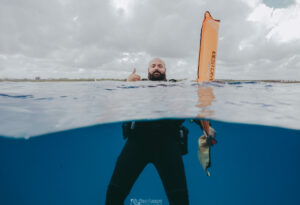Cenote Carwash, officially known as Aktun Ha, owes its unusual nickname to a local story that taxi drivers used to stop there to wash their cars in its crystal-clear waters.
Today, it is much more than just a water stop. It is a paradise for snorkelers, divers, and underwater explorers. The cenote offers exceptional visibility, colorful aquatic life, and even the occasional encounter with a small, harmless crocodile.
With simple yet practical facilities, Cenote Carwash promises an authentic experience, away from the crowds, ideal for adventurers and families seeking preserved nature.
This guide will tell you everything you need to know to plan your visit and fully enjoy this unique natural treasure.
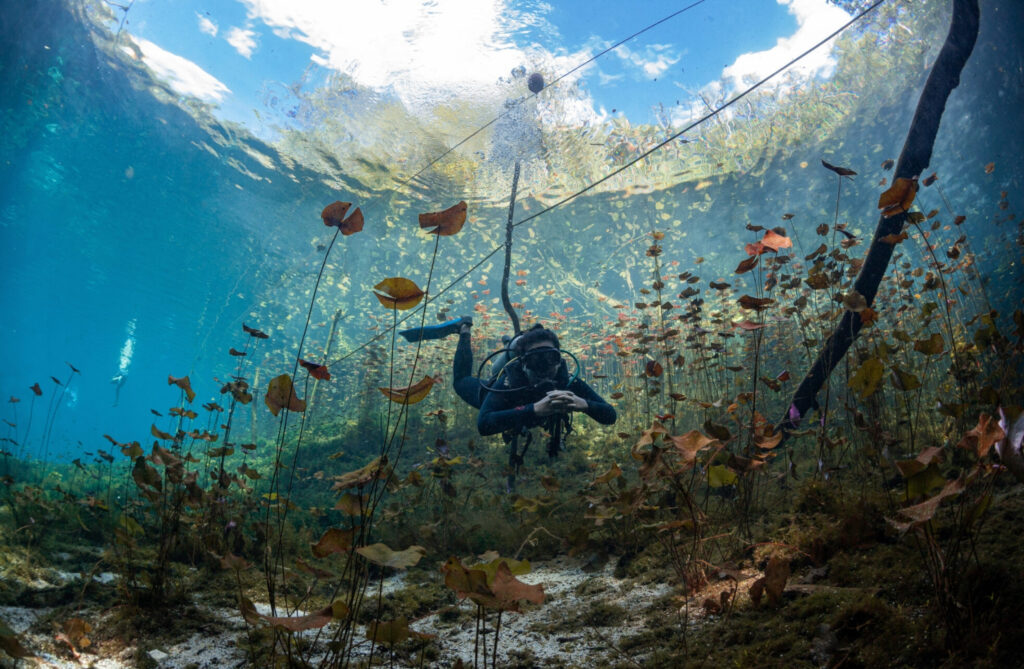
Why is Cenote Carwash so popular among divers ?
Its crystal clear waters offer outstanding visibility, revealing a fascinating underwater world. One of the unique charms of Cenote Carwash lies in its lush aquatic vegetation, including water lilies, floating flowers, and other freshwater plants.
This vibrant flora, combined with a diverse range of fauna, creates a harmonious ecosystem that divers can observe up close.
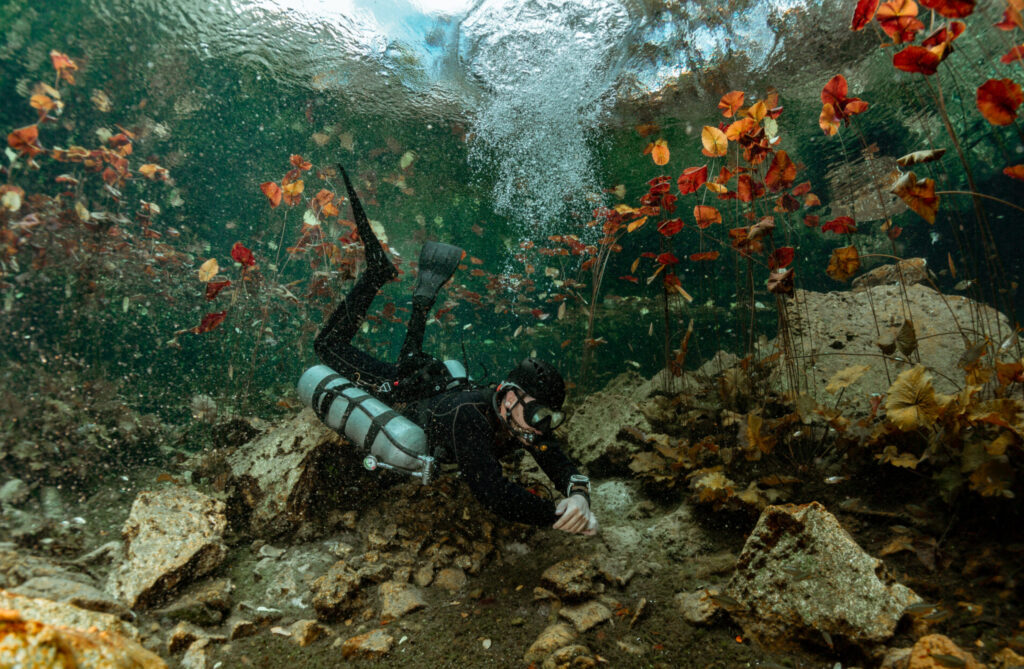
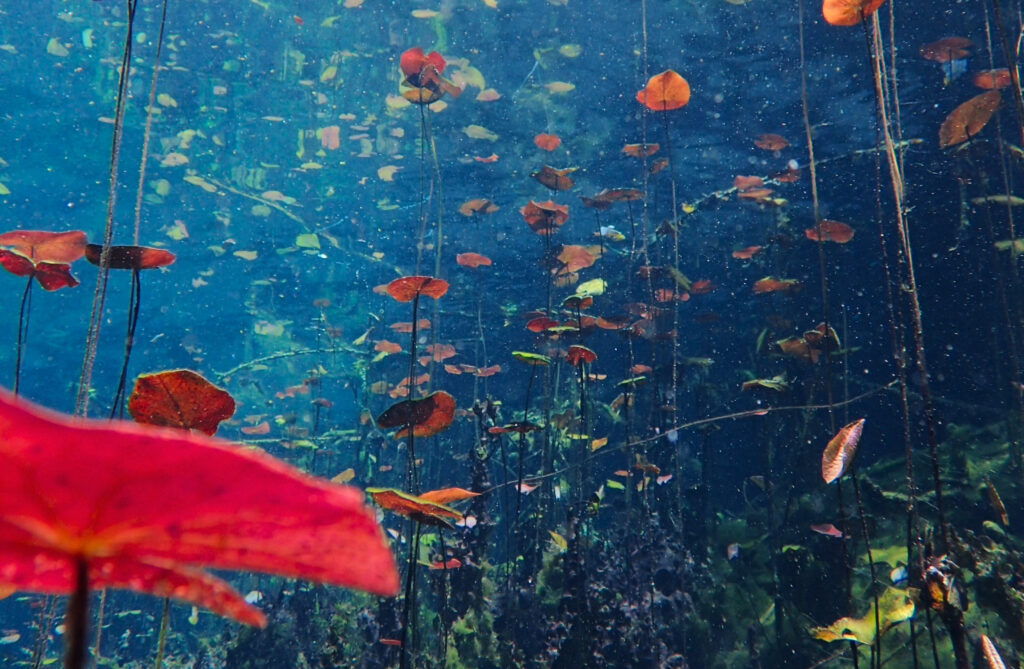
With a depth of approximately 14m, the cenote is accessible to divers of all experience levels. It features a large open area for swimming and a more mysterious cavern section, ideal for those who want to explore further.
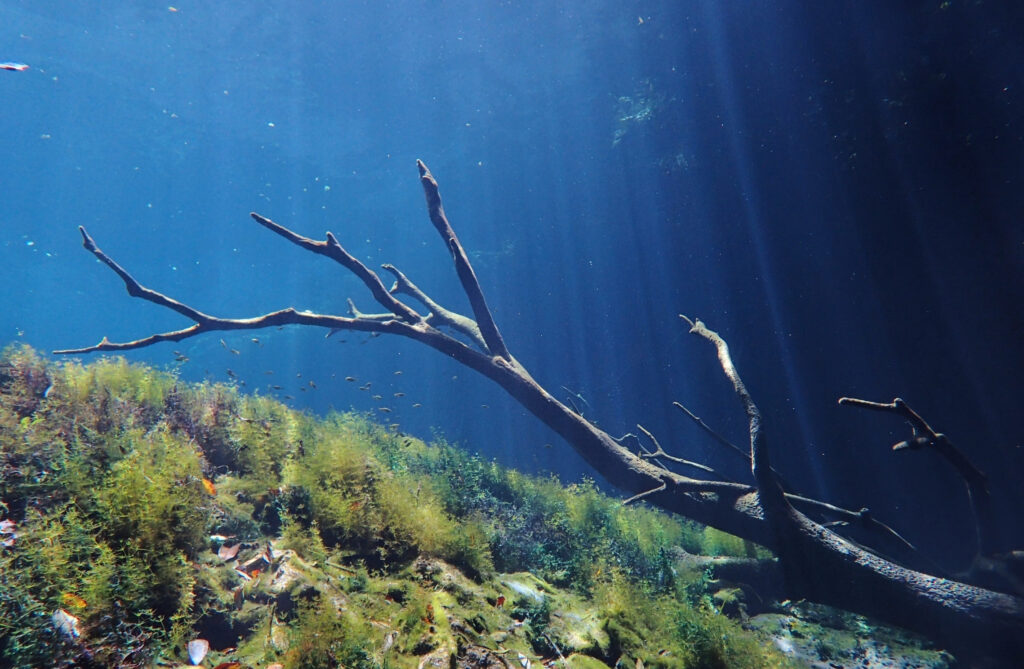
The lighting atmosphere is simply magical. Sunrays filter through the water and the thin layer of algae, creating mesmerizing patterns of light. This natural spectacle delights divers as well as photographers in search of striking underwater scenes.
What certifications are required to dive in Cenote Carwash ?
To dive in Cenote Carwash, you need at least an Open Water Diver certification or equivalent. This certification confirms that the diver has the basic skills required to dive in natural environments.
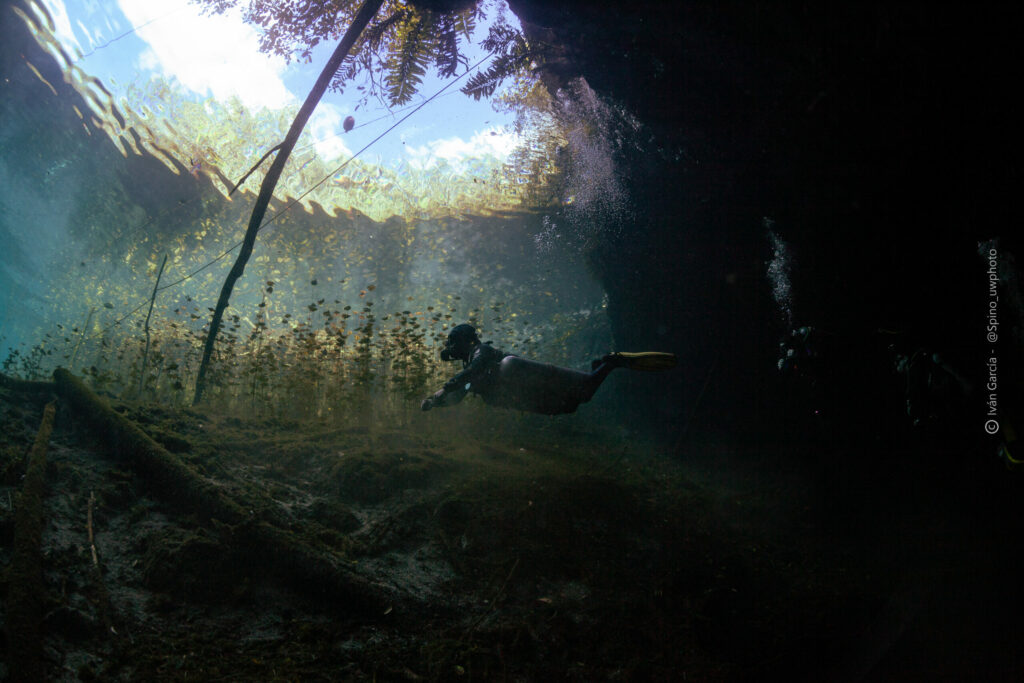
Although the site is accessible at this level, some diving experience is strongly recommended. The cenote’s environment requires careful respect for the ecosystem.
What is the best time to dive in Cenote Carwash ?
The best time to dive in Cenote Carwash is between November and April. The weather is dry, the temperatures are pleasant, and underwater visibility is generally excellent.
In contrast, summer completely transforms the experience. The heat and humidity, combined with frequent rainfall, lead to the decomposition of fallen leaves in open cenotes like Carwash.
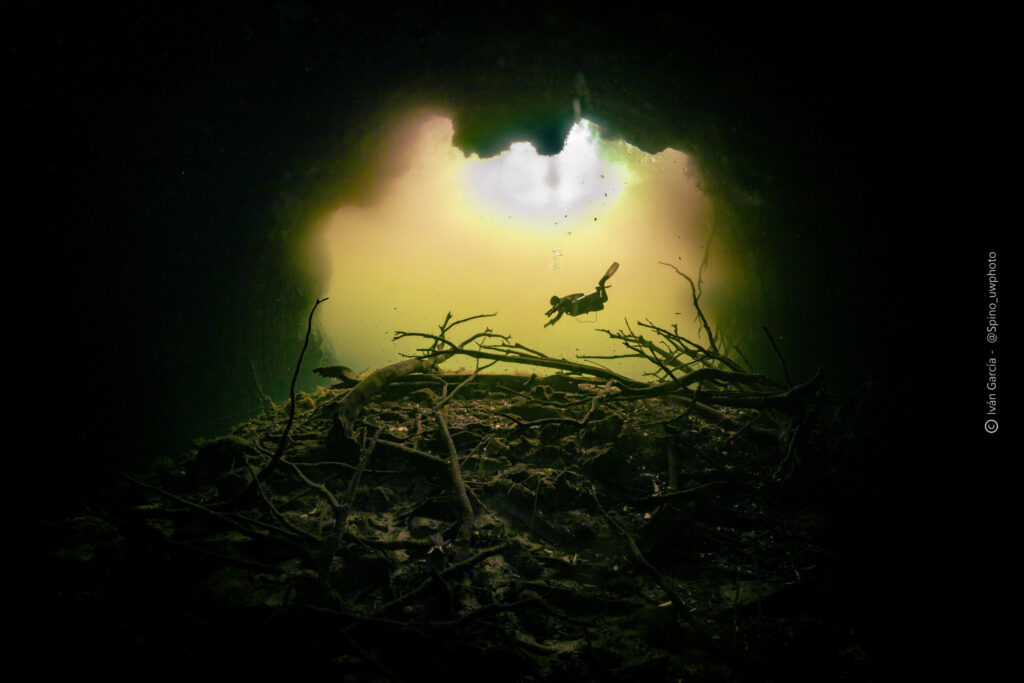
This creates a thin surface layer enriched with tannins, which alters the appearance of the water.
When sunlight hits it, the layer takes on stunning colors. You can see yellow, orange, or green reflections shifting with the angle and time of day. The result is visually striking and makes each dive feel different from the last.
Where is Cenote Carwash and how do you get there ?
Cenote Carwash, also known as Aktun Ha, is located about 8km west of Tulum, along Federal Highway 109 heading toward the Cobá archaeological zone.
It is close to other well-known cenotes such as Zacil-Ha, and only 3 kilometers from Gran Cenote.
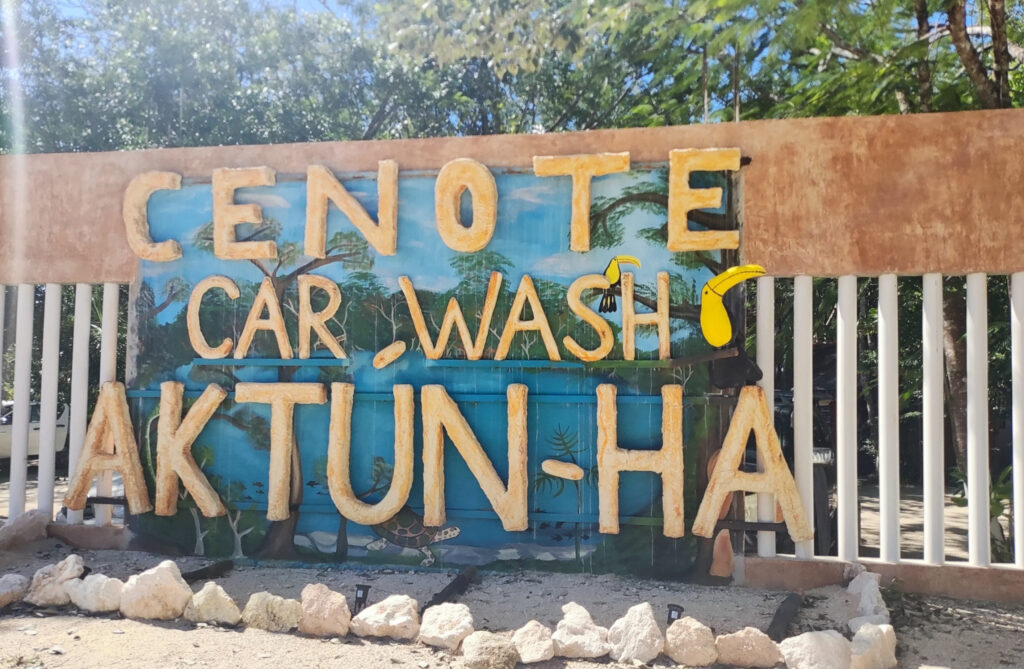
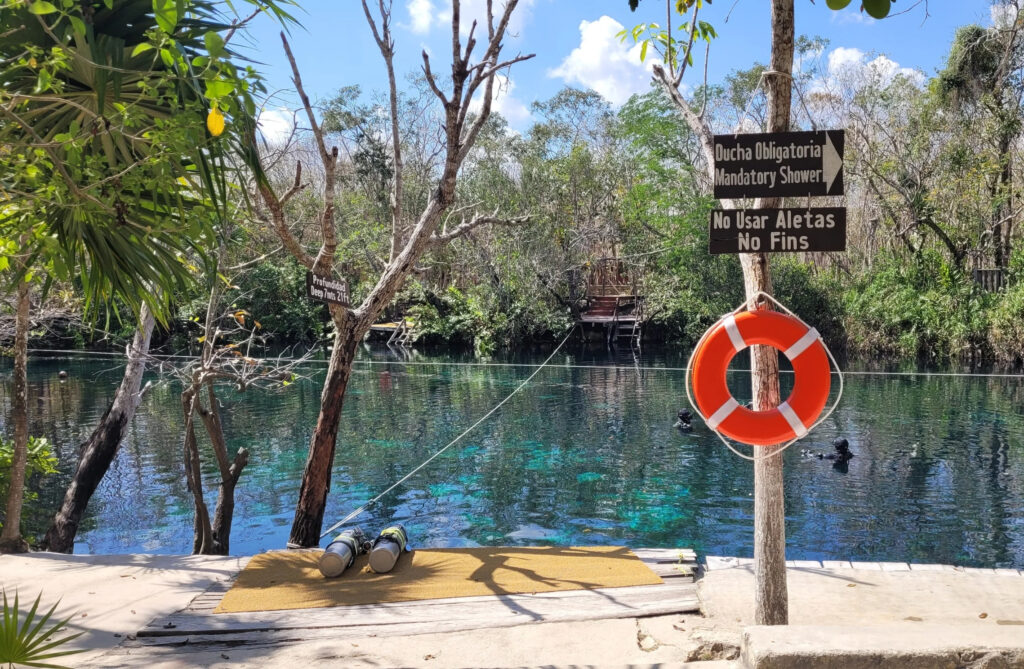
From downtown Tulum, it takes about 15min to reach the cenote. Renting a car is highly recommended, as it gives you the freedom to visit several cenotes in the area at your own pace.
Free parking is available on-site. You can also get there by taxi, with a ride taking about 10 to 20min, but driving remains the best option to fully enjoy your day.
Easy to access, the cenote is located right next to the main road, making it a convenient stop for a swim, a snorkeling session, or a dive.
What are the prices for Cenote Carwash ?
The entrance fee to Cenote Carwash (often included in dive center packages) is around 300 pesos, which is approximately 16 euros, depending on the exchange rate.
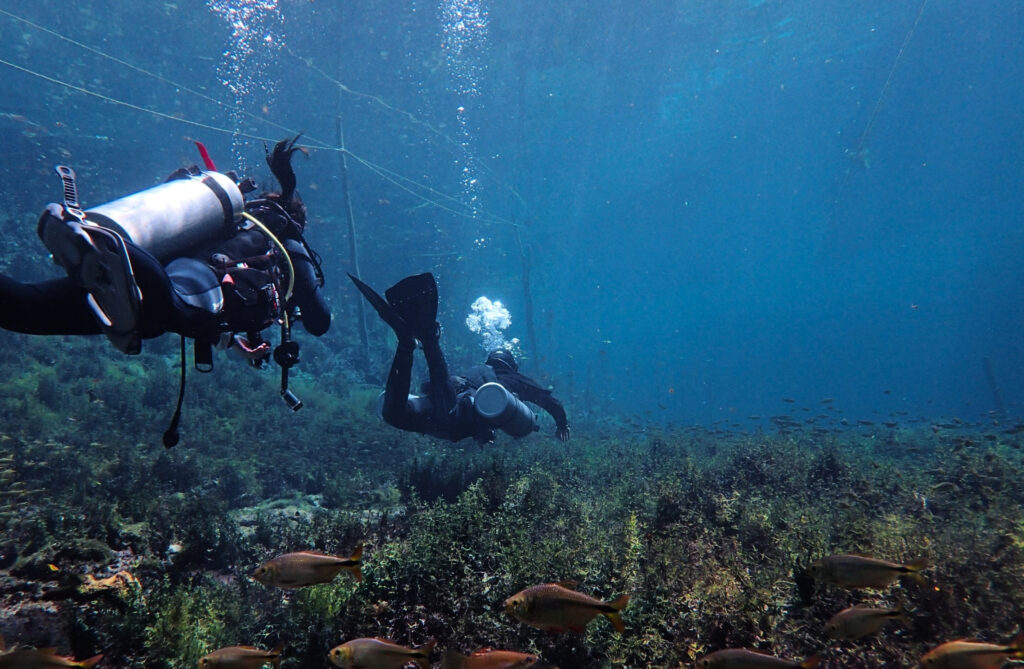
For a dive in Cenote Carwash, expect to pay around 3,800 MXN (approximately €175) for a 45-minute dive, usually followed by a second dive at Cenote Angelita or Cenote The Pit.
Transportation from Playa del Carmen, diving equipment, and light snacks are included.
